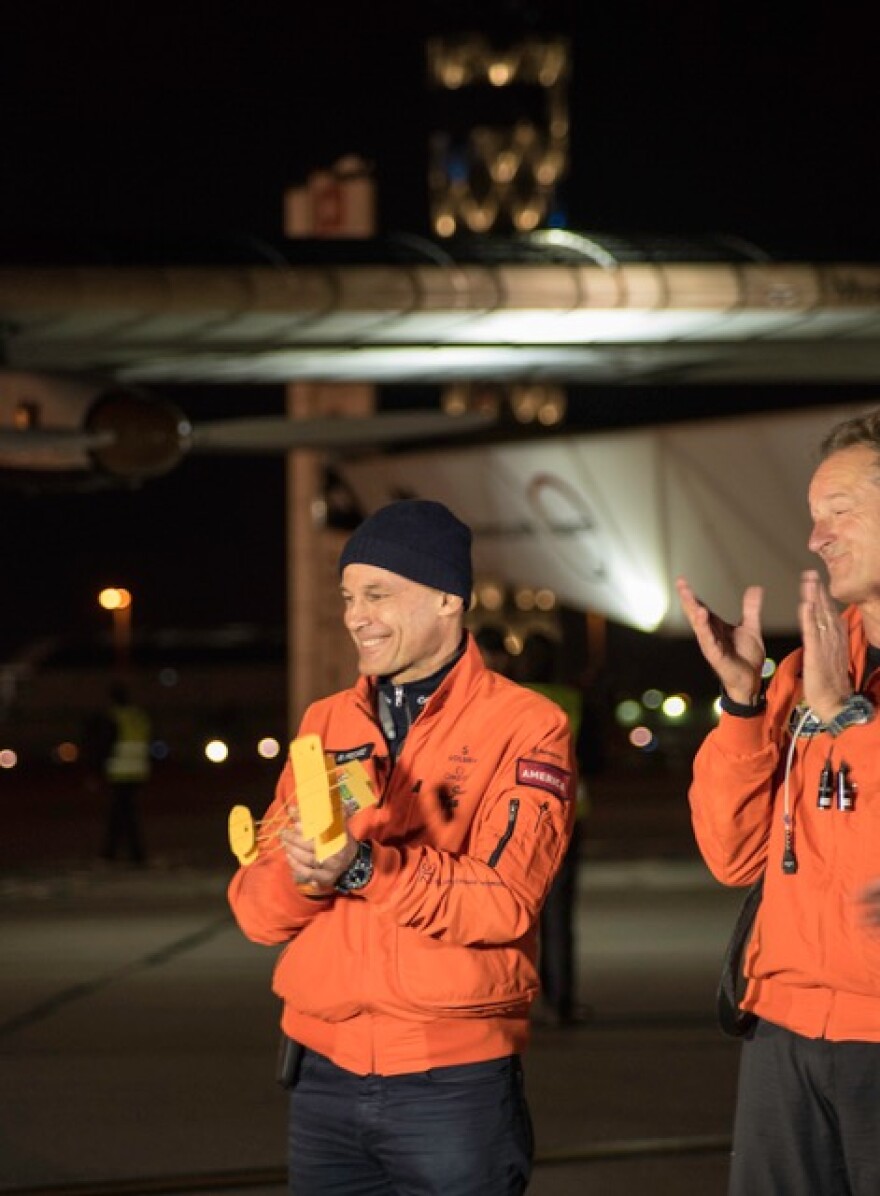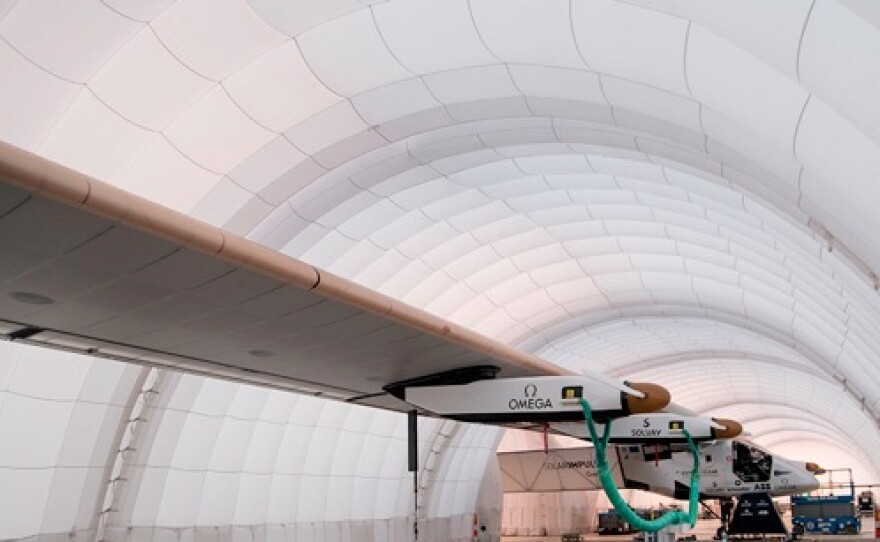Last Saturday night, the future of aviation came to Dayton, where manned flight was created. The Solar Impulse, an electrically powered aircraft, which uses solar cells to generate its power landed at Dayton International Airport on the latest leg of an attempt to circle the earth. Our aviation commentator Dan Patterson was there.
 The Solar Impulse approaching Dayton International Airport, looking very much a UFO.
The Solar Impulse approaching Dayton International Airport, looking very much a UFO.
Credit Dan Patterson
Like an apparition, the Solar Impulse appeared in the night sky over Dayton after relatively quick 17 hour flight from Tulsa, Oklahoma. The plane few above 15,000 feet and a friendly tailwind brought it east earlier than anticipated.
The Impulse cruises at about 40 miles an hour, which means that descending takes time. The huge craft with a 208 foot wing span, slowly circled earthward. For a long time, the future of flight appeared to be hovering over the airport. Some said it looked like a UFO.
A very good aviator friend of mine describes flying as turning gasoline into noise , but this was altogether different. As the Solar Impulse approached, it was very odd to see a flying machine that big making no noise at all.
But finally, the pilot for this leg of the around the world journey, André Borschberg, brought the plane into the wind and silently landed on the north/south runway.

After Borschberg climbed out, he shook hands with fellow pilot Bertrand Piccard, the first to complete a nonstop balloon flight around the globe. This concept for a solar powered global flight is his.
The two were met by members of the Wright family and they told them how much it meant to be in Dayton where over a century ago 2 men followed their dreams and created the airplane.
"The Wright brothers inspired Solar Impulse from the beginning of our adventure," Borschberg and Piccard wrote on their blog. "While there are always people who try to disprove the feasibility of what you are trying to do, people who have learned from the Wright brothers have learned to push forward."
On their website, the aviators refer to the Solar Impulse as an “aeroplane”, which fascinates me. The Wright brothers used this term to describe their invention but it was shortened after World War One to airplane and has been that ever since.
At dawn this morning the Solar Impulse continued the global journey, with Bertrand Piccard as the pilot. The “aeroplane”, with a wingspan wider than the Wright’s first flight was long, slowly climbed into the morning sun, headed for the East coast to be in position for the next long flight, across the Atlantic Ocean following the route of another inspiration for this project, Charles Lindbergh, who flew solo from New York to Paris landing 89 years ago last Saturday.
Dan Patterson is an aviation historian and photographer. You can see more of his photos at his website, www.flyinghistory.com
Aviation programming on WYSO is supported in part by the National Aviation Heritage Alliance and The Air Force Museum Foundation.









